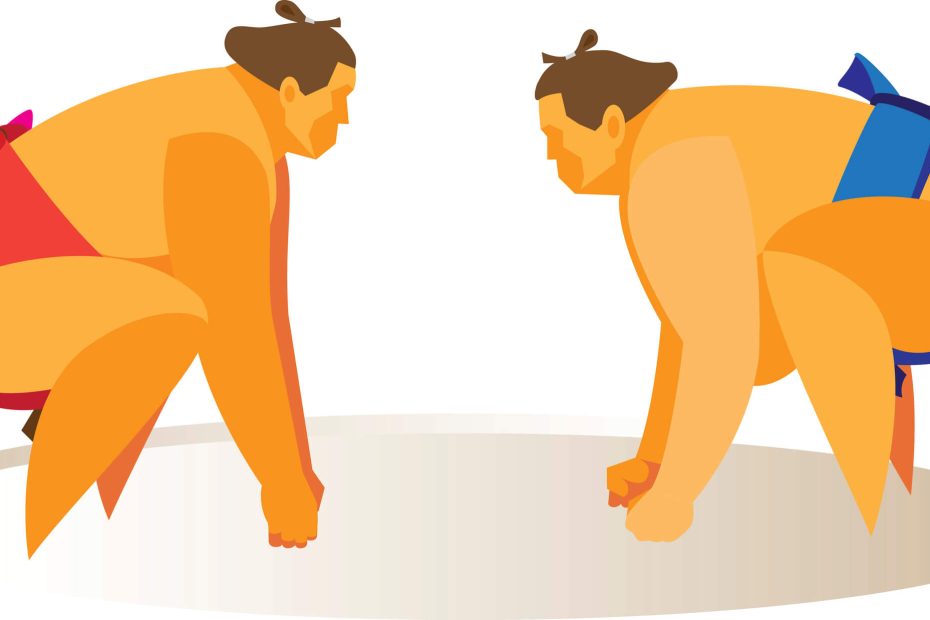One of my grandfather’s first great dreams was to be a sumo wrestler. His mother, on the other hand, believed his body was too small and his brain was too fragile. He once asked me, what did his brain have to do with anything? I didn’t know. Nevertheless, his love for sumo lived on in the television he kept running when I visited. The rounds were short and the uniforms were likewise minimal, but most striking was the size of those in the ring, meeting with a force that shook the sand around them. How did they do it? my younger self would wonder.
Nowadays, I understand that athletes will eat twice a day, leaving room only for naps and training. It seems, in fact, they shape their lives around eating in large amounts. Nowadays, I’ll watch a show about the life of a sumo wrestler and ask a different question: Why do they do it? It’s daily practice to eat tens of thousands of calories. Ample beer and naps slow the metabolism, limiting burnoff during exercise. Eventually, the average wrestler sits above 300 pounds. The entire process is meant for mass and the ability to handle it, which predicts success.
However, alongside the chance of success comes a slew of other predictions. Sumo wrestlers take on higher rates of obesity, hypertension, hyperlipidemia, diabetes and gout, among other metabolic disorders. This is no secret. Many retire in poor health, and life expectancies are cut decades shorter than that of the average Japanese person. To live as a sumo wrestler is to go against most, if not all, of the advice of lifestyle medicine, but the best find this risk worth the result.
With these thoughts and my own ongoing medical education in mind, I imagine how I might react if, one day, a sumo wrestler walked into my clinic. I am reminded of Shobushi Kanji, who, having pursued his own love for sumo at 16 years old, passed at just 28 from multiple-organ failure following a COVID-19 infection. If, at 16, his doctor had advised him away from the path of wrestling, would he have lived a longer life? If, at least, he’d retired after being diagnosed with diabetes, would he be happier doing something else?
Speculation is rarely fruitful, so maybe the more important question is what such advice would even sound like. Part of the physician’s role, as I understand it, is to protect the quality of patient lives through the maintenance of their health. But it’s difficult to understand how this role fits into the world of those who see their health as a worthy sacrifice. After all, what advice is there for those like Shobushi, who dream only of sumo and those labored steps taken to stand at its peak? Difficult as it is, it may be that only in confronting this question can we care for those who, nevermind small bodies or fragile brains, are born with the biggest of hearts.
Related Content
- A Renewed Appreciation for Olympic Athletes
- The Impact of Wearable Technologies on Health Research
- Step by Step — What Completing an Ironman Taught Me About Medical Training
Want to read more from the Johns Hopkins School of Medicine? Subscribe to the Biomedical Odyssey blog and receive new posts directly in your inbox.
